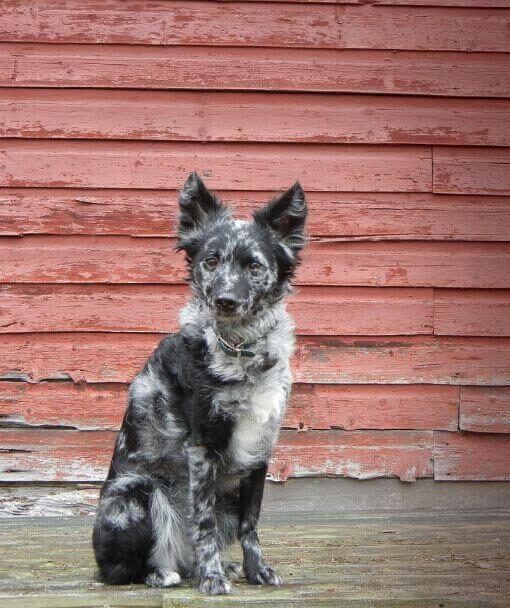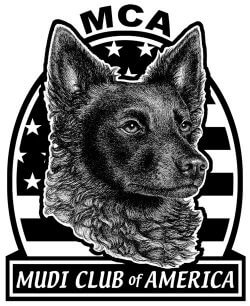Mudi Colors | One of the most attractive elements of the Mudi is the wide variety of colors and patterns available. Read below to learn about each color/pattern.
While multiple colors of Mudi are accepted, each color or pattern must cover the entirety of the dog. White is undesirable—a small patch (less than 5 cm/2 in) on the chest is allowed, along with a small amount of white on the toes. White on the body, face, or Irish markings are unacceptable.
Mudi Colors – Black (Fekete)
Black is, arguably, the most common coloration of Mudi. A small spot of white is permitted on thechest or toes, but not desired. Black is a dominant color. Black dogs can produce brown offspring only if they carry a copy of the recessive brown, and are bred with a dog that also carries at least one copy of brown.
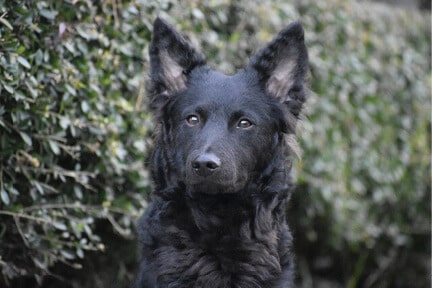
Mudi Colors – Black Merle (Fekete Cifra)
One of the most common varieties, black merle is striking and unique. These dogs are genetically black with a merle pattern. Merle is a dominant gene, and cannot be “carried” by a non-merle dog (though it can be “masked” by some genes). Merle dogs should not be bred together, as homozygous merle dogs are prone to pigment-related health problems.
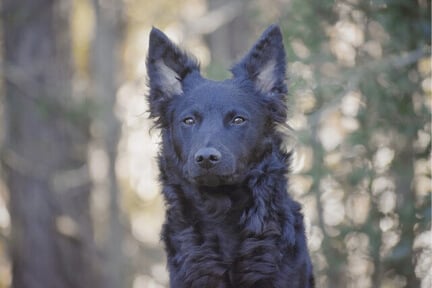
Mudi Colors – Brown (Barna)
Brown is recessive, so both parents must carry at least one copy of the gene. Two brown parents will produce only brown offspring. Brown can vary in shade from light chestnut to deep liver. The nose and eye rim pigment of a brown dog will always be brown—never black. Brown dogs can have brown, green, or yellow eyes.
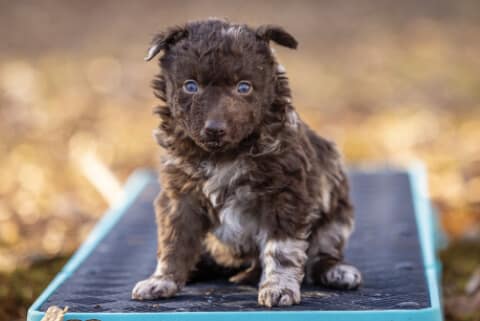
Mudi Colors – Brown Merle (Barna Cifra)
These dogs are genetically brown, with a merle pattern. They can range from a pale chestnut to deep liver, with spots anywhere along the spectrum of brown.
Mudi Colors – Yellow (Fakó) & White (Fehér)
Yellow is another recessive gene, so two yellow or yellow-carrying parents are required for yellow offspring. “Yellow” can actually range in shade from pale cream to deep orange. Some Mudi are so pale they are considered white, though still caused by the same gene.
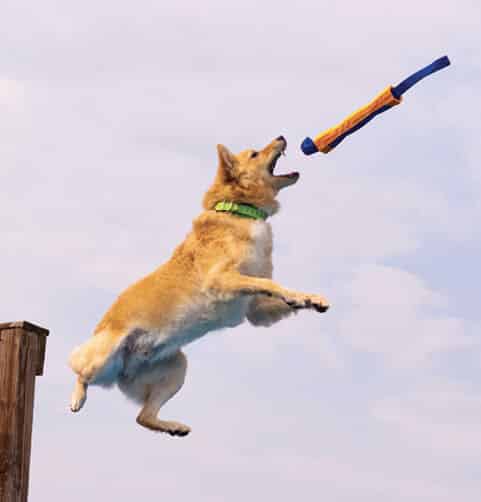
Yellow “dominates” all other color and pattern loci. A yellow dog will still be black or brown genetically, and will display black or brown nose leather accordingly. Additionally, yellow can hide other patterns,like merle, meaning that a dog could be yellow and merle, and look non-merle in appearance. Genetic color testing is critical in these situations to avoid pairing merles.
Mudi Colors – Ash (Hamvas)
Ash, also called blue in some breeds, is the result of a black dog with two copies of the recessive dilution gene. The dog appears gray-steel in color, and is identified visually by nose leather color, which will be a bluish gray as opposed to black.
Unfortunately, dilute colors in some breeds also correlate with a skin disorder called “color dilution alopecia” or CDA. Some Mudi do suffer from CDA, with mild to severe side effects, and at this time there is no genetic test available to identify the cause of CDA.
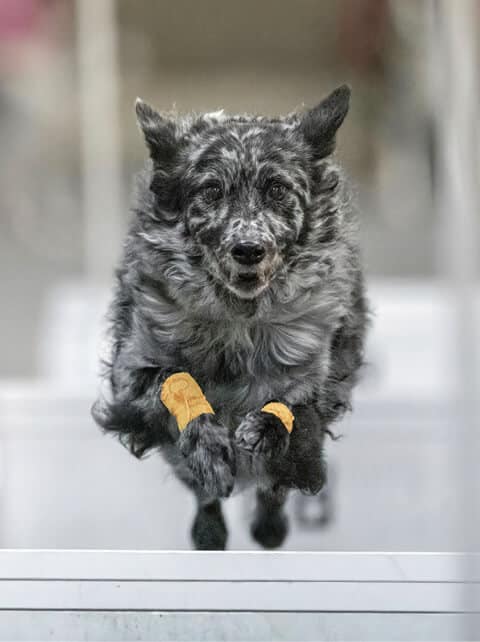
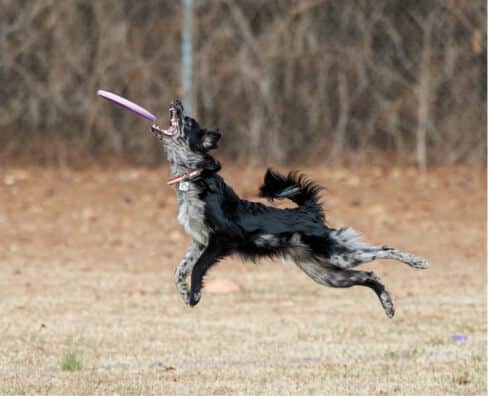
Mudi Colors – Ash Merle (Hamvas Cifra)
Ash merles carry both the recessive dilution gene and the dominant merle gene. These dogs will not display any black patches.
Mudi Colors – Ash Brown/Isabella (Hamvasbarna)
Isabella, also called lilac in some breeds, is the result of a brown dog with two copies of the recessive dilution gene. The dog appears grayish-brown in color, and is identified visually by nose leather color, which will be a pale cream to tan as opposed to deep brown.
Mudi Colors – Isabella Merle (Hamvasbarna Cifra)
Isabella merles carry: recessive dilution gene, recessive brown gene, and the dominant merle gene. These dogs will not display any deep brown patches, and will appear quite pale.
Mudi Colors
By The Mudi Club of America


